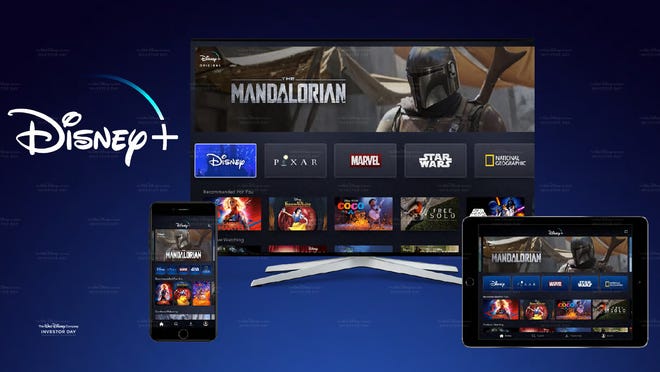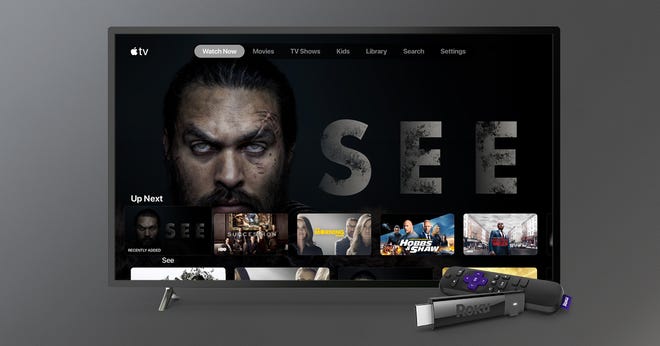This article is more than
6 year oldToo much: Why the streaming wars between Apple, Disney, HBO and more are ruining TV

They say you can’t have too much of a good thing, but the many corporations that produce television are out to prove that you can.
There's just too much TV. There was too much in 2018 and 2017, too, and probably even before 2015, when FX chief John Landgraf, coined the term “Peak TV” to describe the then-400+ scripted TV shows on the air. This year, there are more than 500. And that doesn’t count reality shows, talk shows, documentaries and everything else.
Peak TV was supposed to represent the height of the TV industry, the point at which no more shows could possibly be created until a bubble burst and the number of series – and possibly networks that aired them – diminished wildly.
But that’s not at all what happened. The TV bubble hasn’t burst. It has inflated faster than you can binge-watch all 263 episodes of “Friends.”

This month has seen the debuts of Apple TV+ and Disney+, two streaming services from two of the biggest corporations on earth.
They've come to challenge behemoths Netflix and Amazon, and to lesser extent Hulu (which is majority owned by Disney), and to forge a future in an entertainment industry in which technology has completely upended the way audiences experience art. Or, to be as capitalism-focused as the streamers: an industry in which technology has completely overturned how consumers devour content. The near-future of TV promises an arms race to rival the money spent on the space race, as two more media companies, NBC Universal and WarnerMedia, join the fray next year with Peacock and HBO Max.
Read More (...)
Newer articles
<p>Taylor Swift’s new album: First reactions flood in</p>
Israel intercepts Gaza flotilla and detains activists including Greta Thunberg
Trump commits US to defending Qatar’s security
Federal judge thwarts Trump's Portland security plan as Newsom celebrates victory
Why do I use LOL so much in my texts?
Sanae Takaichi set to become Japan's first female prime minister
It's Taylor Swift album release night. What you need to know about The Life of a Showgirl
‘Immediately’: Israel defies Trump’s demand
Why Trump’s pledge to defend Qatar is so extraordinary
‘ONLY THE BEGINNING’: Europe in deep trouble as ‘hybrid war’ spreads
